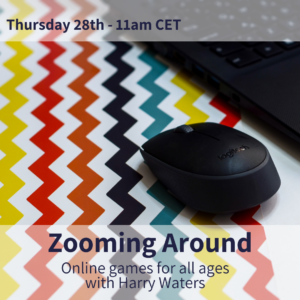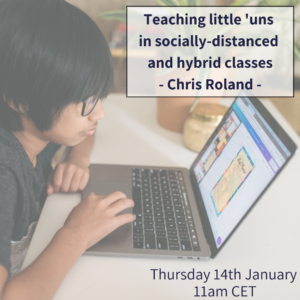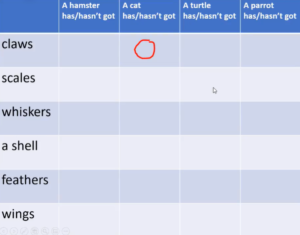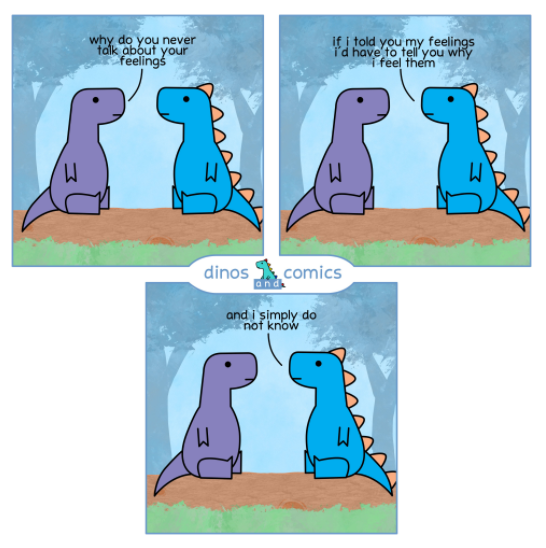Harry is another ELT professional whose passion for teaching shines through. As well as teaching and being involved in the Pearson BBC Live lessons, he’s recently set up his own website – Renewable English – which looks at ways to be more sustainable in our lives and how to introduce those ideas to our learners.
In Harry’s session, he shared lots of engaging ideas for games which can be used online or tweaked for the socially-distanced classroom. Times in brackets are rough estimates and not necessarily exactly when the activity starts! Here’s the link to Harry’s blogpost where he shares these ideas and a few more.
Show and Tell (8.30)
Although this is something which we’ve often done in the classroom, the joy of being online means that learners can share things they might not otherwise be able to bring to the lesson. It’s a lovely way to find out more about our learners and works with all ages – for example, Harry shared his certificate for swimming 25m which he got as a child. You could have a theme for what to bring (something you’re proud of, something you collect, something someone gave you, etc.). There were comments in the chat about how it’s nice to have this home-school connection and to enable learners to share more of themselves.
Treasure Hunt (11.00)
We’ve talked before about using ‘Find something yellow’ with younger learners and Harry had some awesome ideas to extend this activity. Aside from using it to work on the vocab for the lesson, he also suggests:
- Find something that rhymes with…
- Find five things with five letters
It might be worth letting parents know the learners will be doing this in case they wonder why their kids are running around the house during their English lesson!
If you’re working in a hybrid environment, the learners can work in pairs, with those in the classroom giving instructions to those at home.
City Race (13.45)
What’s the capital of Rwanda? You could ask learners this and then have them use their digital literacy skills to race to find the answer. When they have it (Kigali), have them write a word with each letter. In his example, Harry had key, iguana, go, antelope, leftovers, Ireland. Learners then have to make up a sentence or short story using those words. You could say they have to include certain parts of speech, such as an adverb.
It’s a nice way to introduce different places into the classroom as well as Rwanda probably doesn’t come up in a lot of coursebooks, so you could then share some information about the place as well.
Guess who said it (16.10)
Another activity we’ve done before in class but so easy to replicate online: ask the learners a question and have them reply using the private chat function so only you know their answer. You can then give an answer and learners can speculate about whose answer it is.
Depending on your chat settings, you can also let one of the learners lead this task. You may have disabled chat between learners, but making one of them a co-host should mean that the others can private message that person.
Songversations (18.40)
This is an amazing activity which allows learners to be creative. You can find a blogpost where Harry shared more info about it here (along with lots of other great ideas!). Learners choose a song and then create a conversation with the singer – it’s great as it encourages them to think about real interaction and what they can say so that the lyrics are an appropriate response.
Spot the difference (23.45)
A nice idea to keep learners on their toes! Whilst we were watching Harry’s songversation with Taylor Swift, he changed his shirt, put on a hat and put up a poster behind him.
Breakout Investigations (27.00)
This is a good way to get learners using their digital literacy skills to find out about a person. You could either have them choose the person they want to investigate, or assign people to them. The benefit of assigning people is that you can give stronger learners a more obscure person to investigate – great for differentiation. After they’ve researched the person, they can come back together as a group and be interviewed, also giving them a chance to work on question formation.
If you’re wondering who to bring into the classroom, there were suggestions to use the Goodnight Stories for Rebel Girls to introduce strong females into the class. You could also check out biography.com
YouTwitch (29.45)
Leading on from the idea of an interview about a famous person, you could instead do a presentation, which introduces learners to a different skillset, both as presenters and viewers. Whilst one person is presenting, the others could be adding comments in the chat box or using the reactions to respond to what the person is saying, and even nominate a learner to be the chat moderator.
The other option is to do it like HotSeat, with questions from other learners being fired at the presenter. Having them write the questions in the chat box has a couple of benefits – 1. it stops them shouting over each other and 2. helps them practise their writing.
How to… (33.25)
This is another nice way to bring learners into each other’s homes. However, do make sure learners are happy to share their personal space away from their usual zoom environment – as was pointed out in the chat, learners can sometimes accept our authority as teachers and may do things they aren’t overly comfortable with.
The idea of this is for learners to share a tutorial about something they enjoy doing. Harry shared the example of making a cup of tea – it’s an easy way for learners to be introduced to new lexis in context, such as kettle and in this case you could also use it to talk about culture.
Mannequin Challenge (36.45)
This was a craze a few years back; however, I’m sure that many of us were doing statues in the class before that happened! Harry suggests making it a bit more challenging than just action verbs…why not have your learners hold a pose of a personality adjective? a type of weather? a day of the week? Another suggestion was for them to use a scene from a coursebook story – classmates then have to guess which scene it is or remember what was happening in the scene.
Armless fun (40.30)
Ever tried playing charades without using your hands? Another fun way to challenge your learners and get them thinking creatively
TikTok time (43.45)
This is similar to Show and Tell in that you can use it for learners to share the people they follow and ask questions to help build rapport. However, you can also use social media to set your learners homework – have them follow your teaching account, set a task with a specific hashtag for your group and then have them tag you and add the hashtag when they’ve completed the activity. If you encourage them to look at each other’s work, they can get extra views and likes. A wonderful way to take homework out of the book and into their lives.
On the theme of social media, Harry also mentioned using memes in class – you can find lots online which they can add a caption to.








